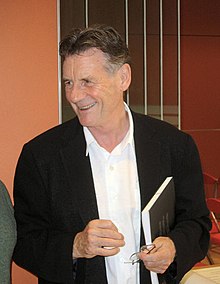Part of the joy of being an archivist at the Royal Asiatic Society is learning about some of the characters that were pioneers in the fields of Asiatic studies. Brian Houghton Hodgson was one such pioneer and knowing that Michael Palin had a particular interest in him, I spent some time before Palin's visit reading up about Hodgson so that I would be better informed.
We have a number of items in the Hodgson archive. One of these is an autograph book which was compiled by his wife, Susan, and contains correspondence from many of the people and institutions with whom Hodgson was connected. Here are a few sample pages:
![]() |
| Certificate of First Class Merit from Haileybury College, 1817 |
![]() |
| Letter from Museum d'Histoire Naturelle acknowledging receipt of birds from Nepal, 1835 |
|
![]() |
| Letters from the Nawab Nizam of Bengal, 1855 |
The Hodgson Archive is one that has already received some cataloging and therefore some of its treasures are known. The life of Hodgson has also been explored in the Royal Asiatic Society Book,
The Origins of Himalayan Studies: Brian Houghton Hodgson in Nepal and Darjeeling 1820-1858, edited by David M. Waterhouse and published by RoutledgeCurzon. I read this accessible book over several days and it stirred my poetic leanings. So here is my take on Brian Houghton Hodgson:
Brian Houghton Hodgson (1801-1894)
How to tell his tale for modern ears? He grows up
in relative poverty, son of a failed banker –
there’s a discrepancy – who hears these days
of a banker’s failings afflicting his family financially?
Two years at Haileybury – now an independent school
of academic rigour and outstanding co-curricular activity,*
but then, trainer of men for the East India Company.
Top in Bengali, Hindi, Political Economy and Classics
but, with his father’s genes, failure in Mathematics.
Calcutta inflames his liver. Hodgson’s future lies
in temperate climes – virgin Nepal calls
for Postmasters, Residents. So off he goes, settles
in a time before Everest’s faces have been tackled,
foothills shackled with tourist trails.
His collecting (say it quietly, shooting and trapping)
provides specimens for zoology’s great and good,
discovers many species of the Himalayan region.
He commissions countless illustrations to record
temples, terrain, birds, mammals and men.
And collects a woman – Meharunnisha Begum
and two children – Henry and Sarah. But here’s
a conundrum: when he’s expelled from Kathmandu
(personality clash with Governor-General Ellenborough)
she stays, disappears from this tale – a common archival
problem – underdogs don’t get to document their outcomes.
Hodgson, unhappy in England, leaves kids (for the best)
with Aunt Fanny – after all, this is long before Bowlby’s
attachment theory. Though concerned for their unfortunate
hue, he returns to research in Darjeeling, alone,
with retinue of artists, servants, sweepers, messengers, shooters, stuffers and coolies.
Sarah’s death of TB doesn’t bring him back, just
his own poor health. And marriage. Anne Scott
is made mistress of Brianstone. Hodgson’s focus
turns to linguistics, ethnology, he advocates
colonization but deplores imprudent Englishmen.
In 1858 he departs
and though survives to become a nonagenarian,
India no more calls. He settles to family life,
after Anne’s death takes a 26 year old wife,
receives an honorary doctorate at Oxford.
Culture, personality, ideology meant he was often
wrong (and who isn’t?) on theories of religion
and race, species’ names. Still, studies of Himalayan
zoology, architecture, Buddhism and ethnography
are rooted in Brian Houghton Hodgson.
![]()











